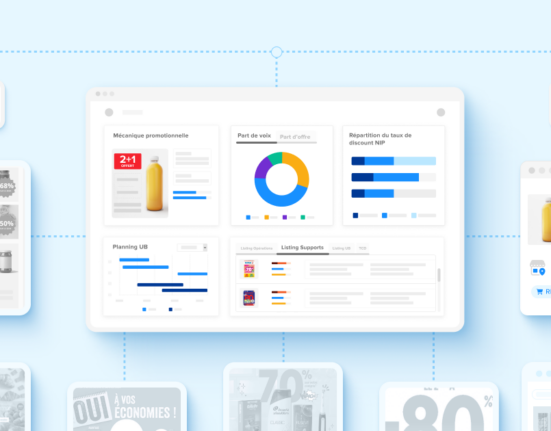Are retailers more likely to break MAP around the holidays? This was the question we at Wiser asked ourselves before the start of the Thanksgiving through Christmas holiday shopping season.
Our thought process went like this: The holiday season is the most competitive time of year for retailers. The National Retail Federation reported that 165 million people shopped online and in-store between Thanksgiving and Black Friday. Your average shopper over that five-day period spent more than $313 on gifts.
Any retailer would get excited over those numbers. Therefore, we assumed that the desire to capture more sales in a hyper-competitive time period would result in more retailers breaking MAP to advertise lower prices than their competitors.
Sounds good on paper. But was it true? We set out to find out.
Do MAP Violations Increase Around Thanksgiving?
Yes.
MAP violations increased around Thanksgiving and Black Friday. With that out of the way, let’s get to the long answer.
What Were the Real MAP Violation Trends?
So, our hypothesis was correct. However, there is more to the data than a simple yes/no answer.
Wiser monitors MAP violations for customers around the clock. We looked at our own data to get the bottom of this question. First, we examined the period before Thanksgiving. Between Nov. 2 and Nov. 14, there was an average of 776 MAP violations per day. This is standard and was well within the expected number.
Our first interesting data point occurred on Nov. 15. MAP violations jumped to 3,321 across our customer base that day—roughly one week prior to Black Friday. That was a day-over-day increase of 3,031 MAP violations! Something was starting to happen.
What was it? We believe that retailers started to offer early deals in advance of Black Friday. The official kick-off of the holiday shopping season isn’t really official at all. Promotions are on the table earlier and earlier, which is another strategy alongside breaking MAP that is employed to capture market share.

Then Came Thanksgiving
The trend of increasing MAP violations continued once we neared the Thanksgiving holiday. After a slight return to normal after Nov. 15, violations shot up starting on Nov. 19. That’s three days prior to Thanksgiving.
The number of MAP violations per day was:
- Nov. 18 – 641
- Nov. 19 – 3,649
- Nov. 20 – 4,993
- Nov. 21 – 1,307
- Thanksgiving – 4,690
You’ll notice that the peak of MAP violations occurred two days before Thanksgiving, with a dip the next day and another spike on Thanksgiving itself. The reason why is likely that more retailers are launching their Black Friday sales earlier than the actual Black Friday. Stores open Thanksgiving day or night, and many retailers could be spicing up their deals early by breaking MAP.

MAP Violations Black Friday and on
Black Friday became the star of the show once Thanksgiving finished. At least, as far as the number of shoppers hitting stores was concerned. As far as MAP violations? Not so much. There were only 718 violations reported on Black Friday.
There are a few likely a few reasons for this. One, MAP policies are more prominent among online brands and retailers, and Black Friday is a traditionally in-store shopping holiday. The second reason is the set of spikes in violations we saw a few days before Black Friday. No longer just one day, retailers are offering sales well in advance, and therefore the MAP violations are recorded earlier in the week.
The final reason is Cyber Monday. After the slight trough after Thanksgiving, Cyber Monday was a return to form for holiday MAP violations. There were 3,676 violations recorded for our customers. It wasn’t until Nov. 27 that the number of violations leveled out at a more typical rate.
Why so many on Cyber Monday? This spike was expected because of the popularity of multi-channel shopping. Gone are the days of buying only in stores. Now, consumers buy from online and brick-and-mortar retailers, compare prices across both channels and use Buy Online, Pick Up In-Store (BOPIS), ship-to-store, or other options. Therefore, Black Friday and Cyber Monday are more like one long event than two separate sales periods. The need for competitive prices is just as important on Monday as it is on Friday.

The Calm After the Storm
With Black Friday over, it was a return to (relatively) normal MAP violations in the following week.
The average number of violations from Nov. 27 through Dec. 2 was 885. A reminder: the average number of violations the week before MAP violations began to spike was 776. The period before holiday promotions and the period after it were fairly equal in terms of MAP violations.
What does all this mean? Simply put, brands should be on the lookout for MAP violations around the holidays. There’s an increased chance that retailers break MAP to drive sales, and that can eat into profit margins—among other concerns—for brands and manufacturers.
A quick look at the big picture shows just how much violations spike around the holidays:

How to Combat Holiday-Themed MAP Violations
It’s one thing to be able to see that MAP violations increase around the holidays. It’s another to be able to protect your brand and prevent those violations from negatively impacting your business.
We covered many viable strategies in our blog on how and when it’s OK to let prices drop. If you’re noticing violations spike and what to do something about it, perhaps try:
- Taking Your Own Holiday – Give your retail partners a break and pause your MAP policies during key promotional periods like Thanksgiving through Black Friday. Sure, this is gaming the system a little bit—you can’t have MAP violations if you don’t have MAP policies—but it’s a good way to cut retailers a little slack when price competition is at its highest. Furthermore, brands offering MAP holidays could be one reason why there’s the spike in violations seen above.
- Be More Selective – You should also be more selective when it comes to which products are protected by MAP. You know what your top sellers are, and those are the ones that could deserve MAP policies around the holidays. Your lower-tiered products? Perhaps not as much.
- Price at MSRP – You can also opt for MSRP pricing instead of MAP. This could work if MSRP is lower than MAP, and it should keep your products priced competitively across multiple retailers and competitors. MSRP pricing could be more advantageous when MAP violations are likely to spike.
Another solution is to use the rest of the year to prepare your pricing strategies in anticipation of an increase in MAP violations. That’s the benefit of good data—it can improve your planning, so you have a better idea of what the future holds.
Come the holiday shopping season 2019, you’ll be ready to handle a spike in MAP violations. That is if you know when and where they’re likely to occur. Connect with Wiser today to learn more about our MAP monitoring and enforcement solutions so you can get the most out of all major shopping periods.
Editor’s Note: Contributing to this article is Tom Lee, Sr. Product Manager at Wiser.









